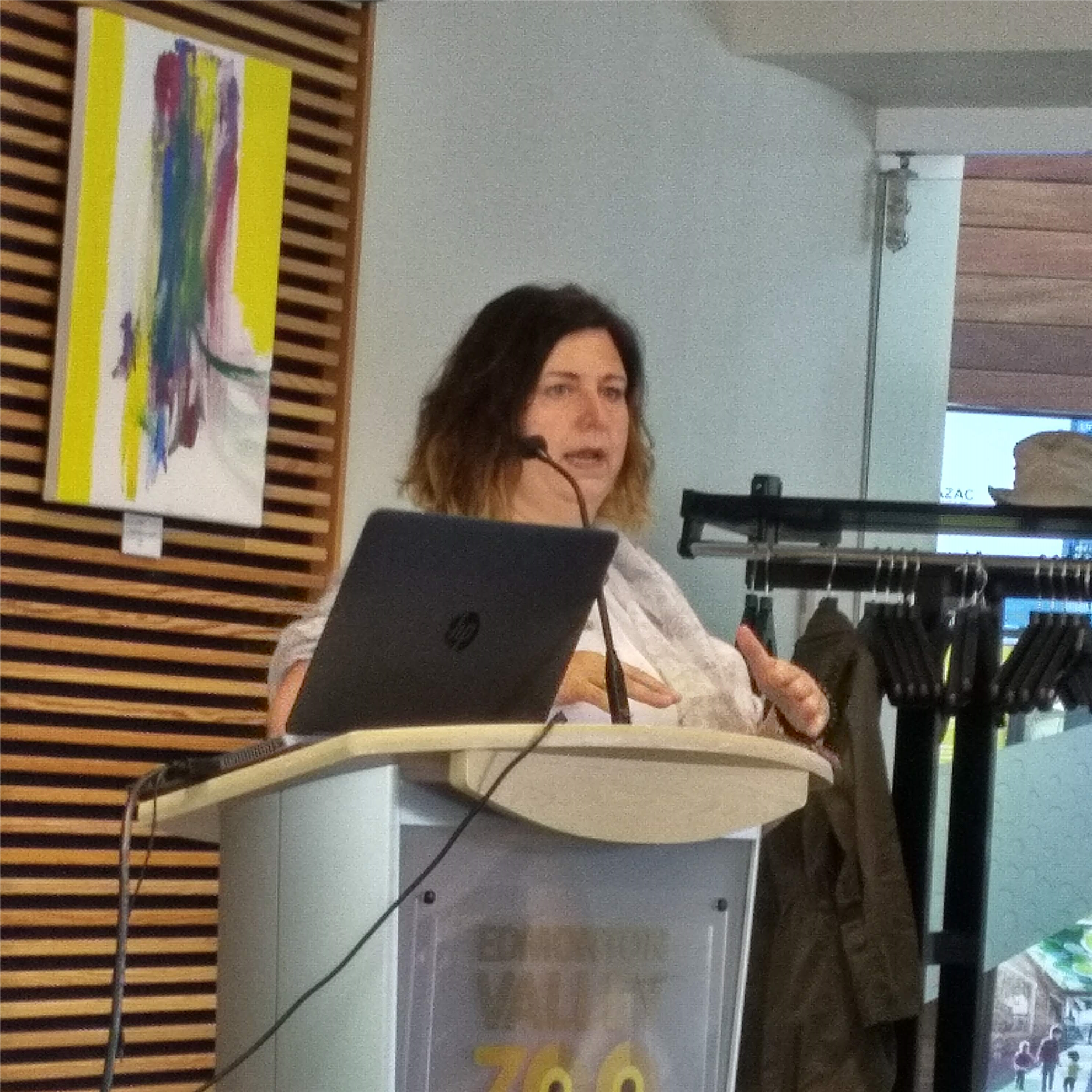This last Tuesday we met at the Valley Zoo for a catered lunch and a talk by Tammy Wiebe, the Executive Director of the Valley Zoo Development Society, followed by a tour and introduction to the valley zoo revitalization plans. Tammy started by saying that zoos have changed a lot over the years. They now focus a lot more on animal conservation and public education. They believe that they are the last stand for a lot of animals that are disappearing in the wild. About sixty five percent of all wild life will be lost by 2020, and most of this loss has been caused by humans.
The Edmonton zoo was founded in 1959 as a small children’s zoo, and still remains an intimate zoo due to the location, but they now have more emphasis on animal conservation, and take part in species survival programs. Tammy said that people only save what they love, they only love what they understand, and they only understand what they know about. This is why teaching people about animals in the wild, and giving them an opportunity to learn more, is so important. The valley zoo is host to about sixteen thousand school children and receives over half a million visitors in total every year.
The Valley Zoo is owned and operated by the City of Edmonton, and the Valley Zoo Development Society is a separate group with charitable status that does fundraising specifically for the zoo. The Valley Zoo deliberately operates at a loss, and is the cheapest City owned facility for a family to visit in Edmonton The zoo has been undergoing a revitalization over the past few years with some phases having been completed, some underway and several more in the development and fundraising stages. The zoo has been divided into areas called zones, and each zone will be funded and developed separately. One of the zones currently under development is the ‘Under Zone’, where visitors will be able to walk underneath the animals and see what life is like for animals that burrow and live underground. Another is the ‘Between Zone’, which will give visitors a view of what animals that live both underwater and on land see every day. It will also include a natural wetland. There will be three different ‘On Zones” for various animals that live on land. In addition, there will also be an ‘Above Zone’ where visitors will be able to walk around in the tree tops, to better view tree dwelling birds and animals. They are also currently developing an ‘Urban Farm Zone’ to introduce city dwellers to what life is like for animals on the farm, which will include a large heated barn so that the programming can continue year round. The barn will have a green roof and will include access for some of the animals (goats) to the roof. The zoo also has a plan to pave their parking lot, including swales to catch and filter run-off, with solar panels above the parking lanes to supply the zoo with power.
The zoo takes part in species survival plans for more than twenty species of animals at our zoo, the Red Panda and the Grevy’s Zebra are two of these. These worldwide survival plans are an essential part of maintaining the genetic diversity of animals on our planet. The animals that are mated are carefully selected for their genetic diversity. Sixteen Red Panda babies from this zoo that have been placed in other zoos over the years. We can also be a part of these plans and our Rotary club is currently sponsoring the Grevy’s zebras at the zoo. They are always looking for supporters, both in volunteer time or funds.
